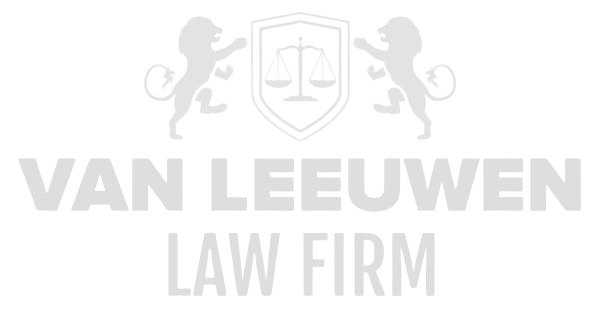The General Data Protection Regulation (GDPR) forms the foundation of modern privacy legislation within the European Union and the European Economic Area, by creating a uniform legal framework that governs the processing of personal data. This regulation imposes obligations on every entity that processes personal data, regardless of company size or sector, and requires data controllers and processors to demonstrably assume responsibility for complying with the GDPR principles. Technical measures such as encryption, pseudonymization, and access security must be combined with organizational measures, including privacy policies, data classification, and internal audit programs. Legal compliance extends from establishing appropriate legal bases for data processing and ensuring transparent privacy notices, to safeguarding data subject rights such as rectification, erasure, and data portability. The uniformity offered by the GDPR is intended both to reduce the administrative burden on international businesses by providing a single set of rules across the EU/EEA, and to strengthen privacy protection for individuals by imposing fines of up to €20 million or 4% of global annual turnover for violations.
Compliance with the GDPR demands a multidimensional approach that transcends legal, technological, and organizational domains, and must be deeply embedded in the strategy and culture of an organization. Regulatory challenges involve interpreting concepts such as ‘legitimate interest’ and ‘accountability’; operational challenges concern the implementation of secure IT architectures, data minimization, and automated processes for managing consent; analytical challenges require balancing the use of data for insights with the protection of data subjects’ privacy rights; strategic challenges relate to the integration of privacy-by-design into new products and services, as well as aligning compliance efforts with long-term objectives. For organizations facing allegations of financial mismanagement, fraud, bribery, money laundering, corruption, or violations of international sanctions, not only is GDPR compliance at stake, but also the continuity of data processing, regulator trust, and reputational integrity may be significantly compromised.
(a) Regulatory Challenges
Interpreting open norms and definitions within the GDPR requires in-depth legal expertise, as ambiguities around terms such as ‘processing’ and ‘accountability’ must be translated into concrete policy frameworks. Implementing a well-structured legal basis matrix for data processing—specifying the legal ground under which each category of personal data is processed—requires accurate mapping of data flows and associated risk analyses. Determining when consent is lawfully applicable, as opposed to when legitimate interest or legal obligation serves as the processing ground, can lead to intensive internal debates and legal reviews. Additionally, international data transfers under the GDPR must be safeguarded through standard contractual clauses or binding corporate rules, creating complex tensions between multilateral trade agreements and European data privacy requirements. Supervisory authorities apply differing interpretations in their enforcement actions, requiring organizations to continually monitor whether new figures or guidance from the European Data Protection Board (EDPB) or national authorities necessitate further adjustments.
The obligation to conduct Data Protection Impact Assessments (DPIAs) for high-risk processing operations implies that organizations must systematically identify potential breaches and develop mitigation plans for risky activities such as profiling or large-scale biometric identification. DPIAs must be carried out before the actual start of the processing activity, involving multidisciplinary teams of legal experts, data analysts, and security specialists to conduct comprehensive risk analyses. Assessment reports and the outcomes of mitigating measures must be documented for supervisory authorities, which is administratively intensive and requires specialized knowledge. In cases where mitigation measures are deemed insufficient, prior consultation with the supervisory authority is mandatory, introducing further effort and time constraints. At the same time, organizations must establish a process for periodically reviewing DPIAs, since technological developments or scientific insights may reveal new risks over time.
Managing data processors and subcontractors introduces additional regulatory complexity, as processors have direct contractual obligations under the GDPR and can be held liable for their own breaches. Contractual models must be robustly designed, incorporating mandatory clauses on sub-processing, security measures, and audit rights for the controller. Organizations must maintain a register of all processors and any sub-processors—a continuous task given the dynamic nature of outsourcing and cloud services. Verifying whether processors are truly compliant requires both verifiable technical statements (such as SOC 2 reports) and on-site or remote audits; this can pose logistical and resource challenges, especially within global chains operating under different jurisdictions.
Establishing effective breach notification procedures demands meticulously documented incident management processes, with organizations required to notify relevant supervisory authorities within 72 hours of discovering a breach—and, where high risks to individuals exist, to inform the affected data subjects as well. Building technical detection and response systems capable of reliably signaling and classifying data breaches requires investment in advanced monitoring tools and security operations centers (SOCs). Organizationally, this calls for a layered response structure: operational teams, legal experts, communications advisors, and senior management must quickly coordinate to meet both technical and legal requirements. Regularly rehearsing breach scenarios and updating playbooks is essential to ensure timely and effective action in the event of actual incidents.
Lastly, providing evidence of full compliance—the so-called accountability obligation—presents an ongoing challenge: organizations must document all processing activities, privacy policies, DPIAs, contracts, and notifications, making them available to supervisory authorities and external auditors. This necessitates a strong combination of document management systems, automated workflows, and engagement across various departments. Inconsistent or missing documentation can lead to fines and sanctions, as the inability to produce a complete record may prevent an organization from proving that it has met GDPR requirements. Organizations must therefore continuously invest in both tooling and procedural integration to fulfill this accountability obligation.
(b) Operational Challenges
Implementing technical and organizational measures requires redesigning IT architectures according to the principles of Privacy by Design and Privacy by Default. Systems must be configured by default to collect and store only strictly necessary personal data, while advanced anonymization tools or pseudonymization techniques should be applied to reduce risks. This may lead to extensive refactoring of legacy applications, with points of integration with external systems, databases, and backup processes needing to be redesigned. Outdated software components that are no longer supported pose a risk of security vulnerabilities and should be replaced or compensated with additional security layers.
Another essential operationalization point is setting up automated consent and rights management platforms that allow users to easily access their data, withdraw or transfer consent. Linking consent management systems to existing CRM and marketing automation tools is technically complex and requires interdisciplinary collaboration between IT, legal experts, and marketing teams. Achieving a uniform customer journey, in which users are always presented with the correct consent options, requires strict testing protocols and ongoing monitoring of user interfaces.
Data minimization and storage limitation require categorization of data by retention period and purpose limitation. Automated policy engines must link metadata to each dataset, after which, once retention periods have expired, data should be automatically deleted or archived in read-only storage. Setting up auditable retention policies in large data lakes and data warehouses is an organizational effort that requires precision to avoid unintentionally losing valuable research data or retaining personal data longer than allowed.
Embedding an incident response framework and the periodicity of security audits also presents an operational challenge. Regular penetration tests, vulnerability scans, and third-party assurance reports need to be scheduled and followed up, including escalation procedures for detected findings. In critical sectors such as healthcare and financial services, additional oversight often applies, meaning external certifications (e.g., ISO 27001, NEN 7510) or mandatory independent audits may also be necessary.
Lastly, staff at all levels must be trained in privacy awareness and security hygiene, from the boardroom to the helpdesk. Training sessions, e-learning modules, and phishing simulations should be conducted regularly and tracked in a learning management system to demonstrate that employees are aware of their role in GDPR compliance. A culture of continuous awareness reduces human errors, which statistically are the leading cause of data breaches and compliance incidents.
(c) Analytical Challenges
Utilizing personal data for valuable insights requires advanced data analysis tools and methods, but it also brings the necessity to execute analytical processes in a privacy-friendly manner. Applying differential privacy, federated learning, or homomorphic encryption can broaden the scope of data mining without exposing individual data, but this requires specialized data science and IT capabilities. Models must be trained in such a way that the risk of unintended disclosures of personally identifiable information is minimized.
An additional challenge is bias detection and fairness audits of analytical models. Predictive algorithms making decisions about credit lending, job applications, or health risks should be periodically tested for unjustified predictive deviations from protected attributes. Developing measurement and monitoring scripts for fairness requires expertise in statistics, ethics, and law and regulations, as well as setting up governance processes to correct and document deviations.
Integrating consent and preference management data into analytics pipelines allows organizations to perform analyses only on datasets for which explicit consent has been obtained. Developing ETL processes that respect consent flags and automatically exclude anomalies requires close collaboration between privacy officers and data engineers. Continuous validation and testing play a crucial role in preventing unlawful analyses from taking place.
The analytical infrastructure must adhere to principles such as purpose limitation and data minimization, ensuring that data scientists only have access to aggregated or anonymized datasets. Implementing role-based access controls and dynamic data masking technologies limits the exposure of sensitive fields during exploratory data analysis and model development. Setting up secure enclaves for sensitive analytics may be necessary in critical sectors.
Finally, each analytical workflow must be auditable, so that for each step in the analysis, it is recorded which consent was in place, which data was processed, and which results were generated. Documented data lineage and provenance metadata are essential for both compliance purposes and for demonstrating data quality and reliability of insights in the event of external or internal audits.
(d) Strategic Challenges
Embedding privacy-by-design as a strategic principle requires that new products and services are configured from the design phase with minimal data collection and built-in privacy measures. Product development roadmaps should integrate privacy risks and compliance checkpoints, ensuring that technical architects and compliance teams work continuously together to assess privacy impact in a timely manner. This may result in longer lead times for innovation projects and increased investment in early-stage privacy assessments.
Strategic alignment of GDPR compliance with business objectives requires viewing compliance not just as a cost center, but as a value-creating factor. Transparent privacy policies and privacy labels can contribute to customer trust and offer a competitive advantage. Developing a privacy proposition as part of marketing and sales arguments requires coordination between legal, marketing, and product teams to communicate the right message and define unique selling points (USPs).
Investments in privacy governance platforms and centralized compliance dashboards support a holistic approach: KPIs for data breaches, DPIA completion, and audit findings can be monitored in real-time at the board level. This enables governing bodies to make informed strategic decisions regarding risk appetite, budget allocation, and prioritization of compliance investments.
R&D programs for emerging technologies such as AI, IoT, and blockchain must conduct timely privacy and compliance impact assessments to avoid future legal roadblocks. Innovation roadmaps should include privacy and security gatekeepers with the mandate to pause or redirect unsafe or non-compliant concepts, which adds governance complexity to portfolio management.
Finally, strategically embedding GDPR compliance requires a culture of continuous improvement: lessons learned from audits, data breaches, and supervisory feedback must be systematically integrated into policies, training, and tooling. Setting up cross-functional privacy communities of practice fosters knowledge sharing and ensures best practices are quickly disseminated, helping organizations remain agile in a changing legal and regulatory environment.










